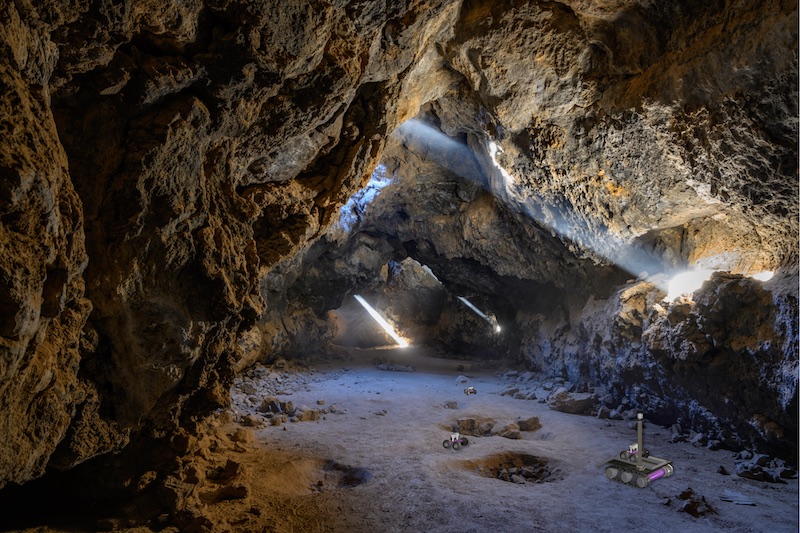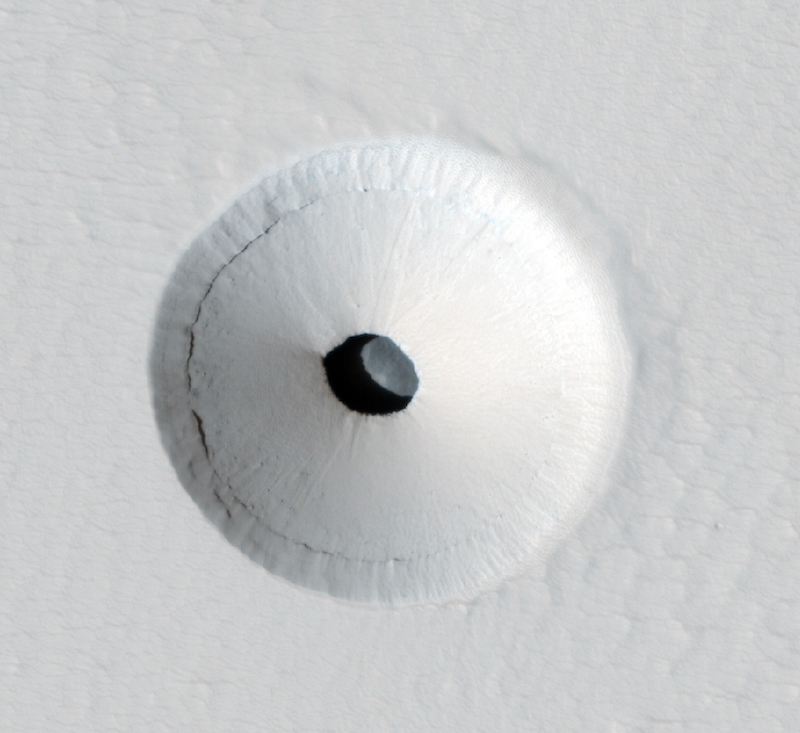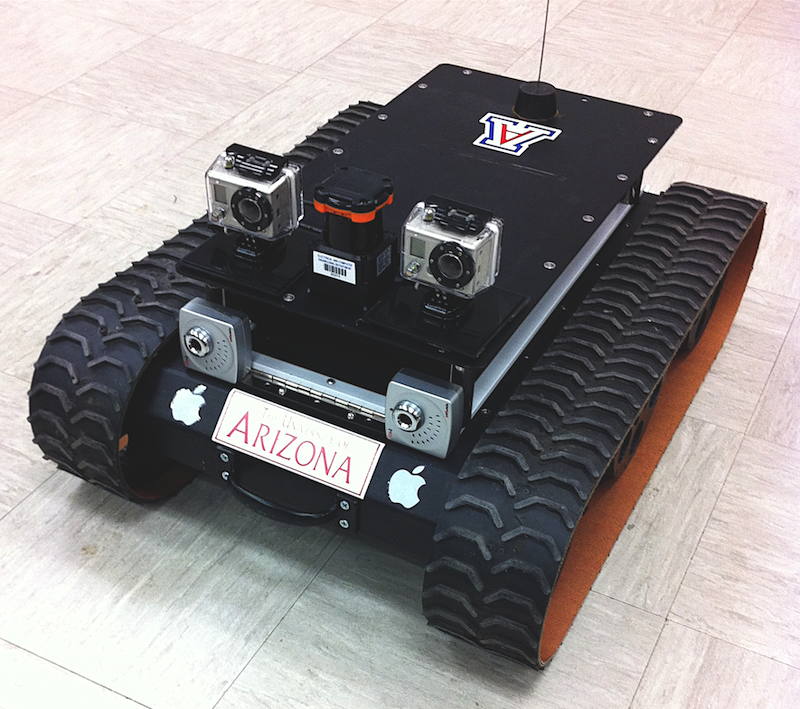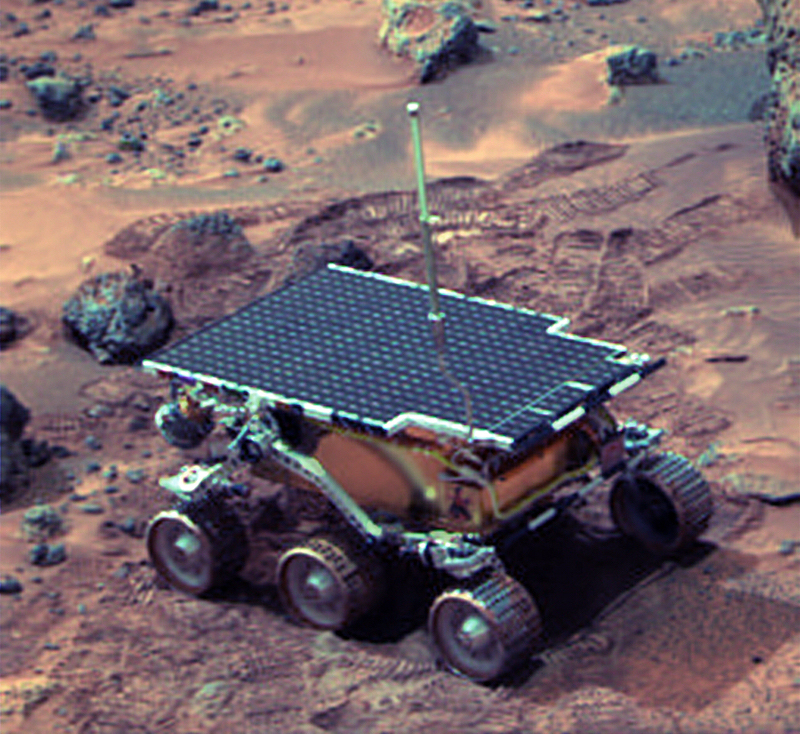
Future astronauts on Mars might use caves or lava tubes as habitats. They could provide shelter from the harsh conditions on the surface, the intense radiation in particular. On March 1, 2023, researchers at the University of Arizona said they’ve developed a new technology where small autonomous robot rovers could start exploring caves on Mars. The rovers – inspired by the fairy tale Hansel and Gretel – would drop high-tech “breadcrumbs” to find their way.
In this case, the “breadcrumbs” would be miniature sensors, which the robots would deploy within the caves in order to monitor their environment and remain in contact with each other. In this way, they could scout for suitable underground places for future astronauts to live and work.
The journal Advances in Space Research published the peer-reviewed details of the proposed new technology as a pre-proof on February 11, 2023.
Last chance to get a moon phase calendar! Only a few left. On sale now.
Exploring Mars caves, with inspiration from Hansel and Gretel
Current rovers are too large to explore caves easily. A flock of smaller robots, however, could do so, and engineers would design them for just that purpose. Also, in those dark subsurface environments, they would need to be able to efficiently monitor their surroundings and stay in contact with each other. The newly devised system is called the dynamically deployed communication network (DDCN).
Additionally, they would also require a “mother rover” that remains on the surface. This is where Hansel and Gretel comes in. As lead author Wolfgang Fink at the University of Arizona explained:
If you remember the book, you know how Hansel and Gretel dropped breadcrumbs to make sure they’d find their way back. In our scenario, the ‘breadcrumbs’ are miniaturized sensors that piggyback on the rovers, which deploy the sensors as they traverse a cave or other subsurface environment.
The University of Arizona also tweeted about the newly developed system on March 1:
Researchers with @azengineering have developed a system that allows autonomous vehicles to scout out underground habitats for astronauts. https://t.co/PM5JOlQnTT
— University of Arizona (@uarizona) March 1, 2023

Fully autonomous rovers
The little rovers are autonomous and depend on each other to do their mission. So, if one rover gets far away from another, but is still within communications range, it will drop a breadcrumb, aka a communication node. Fink refers to these breadcrumbs as “opportunistic deployment.” He said:
One of the new aspects is what we call opportunistic deployment, the idea that you deploy the ‘breadcrumbs’ when you have to and not according to a previously planned schedule.
The exploratory rovers don’t even need the mother rover to communicate with each other. Indeed, they can do that quite easily on their own. The mother rover is more of a passive recipient, collecting data transmitted by the smaller rovers. In this case, it acts as the orchestrator, controlling the rovers’ movements.
Since 2001, Fink and his colleagues have been working on something called tier-scalable reconnaissance. This involves teams of robots working together but at different levels. As a current example, the Perseverance rover on Mars controls the smaller Mars helicopter called Ingenuity. Generally speaking, the small autonomous rovers would work the same way. But in the breadcrumb scenario, this ability would be enhanced, allowing the rovers to operate underground.

Sending information to the surface
The exploratory rovers are always in contact with the mother rover. Therefore, they can send their data to the mother rover without ever having to go back up to the surface themselves. In fact, they would remain down in the subsurface until they died. Fink said:
They’re designed to be expendable. Instead of wasting resources to get them into the cave and back out, it makes more sense to have them go as far as they possibly can and leave them behind once they have fulfilled their mission, run out of power or succumbed to a hostile environment.
Astrobiologist Dirk Schulze-Makuch in Germany added:
The communication network approach introduced in this new paper has the potential to herald a new age of planetary and astrobiological discoveries. It finally allows us to explore Martian lava tube caves and the subsurface oceans of the icy moons, places where extraterrestrial life might be present.
Victor Baker at the University of Arizona also noted that:
The most amazing discoveries in science come about when advances in technology provide both first-time access to a thing or place and the means of communicating what is thereby discovered to creative minds that are seeking understanding.
Habitats for future astronauts
One of the primary objectives would be to find subsurface caverns that astronauts could use as shelters. As the paper explains:
Subterranean caverns, and in particular relatively deep lava tube caves, provide a possible refuge for life under otherwise challenging planetary surface conditions, and, as such, are of prime astrobiological relevance.
Lava tube caves or other subsurface environments may also be suitable habitats for astronauts and subsequent human settlement but are yet to be explored, in part due to difficulties ensuring continued communication with a robotic probe inside these environments.

Exploring Mars caves … and beyond
Other similar but even more advanced missions could involve robotic explorers underwater. This could include the icy ocean moons in the outer solar system.
For example, small robotic probes could explore the methane lakes on Saturn’s moon Titan or even the subsurface oceans of Europa or Enceladus. As with Mars, a mother probe could float on the surface on a Titanian lake or sit on the ice above a subsurface ocean. In this case, the communication nodes would act as repeaters, boosting the signal in regular intervals. This would help prevent the signal from degrading. Even the nodes could gather data, such as measuring pressure, salinity, temperature and other chemical and physical parameters. On these worlds, however, the nodes would send the data back to the surface lander by using a cable. As Fink noted:
Imagine you make it all the way to Europa, you melt your way through miles of ice, make it down to the subsurface ocean, where you find yourself surrounded by alien life, but you have no way of getting data back to the surface. That’s the scenario we need to avoid.
Bottom line: Researchers have developed a “breadcrumb” system that small autonomous robot rovers might use in exploring Mars caves and lava tubes.
The post Exploring Mars caves, leaving ‘breadcrumbs’ first appeared on EarthSky.
0 Commentaires